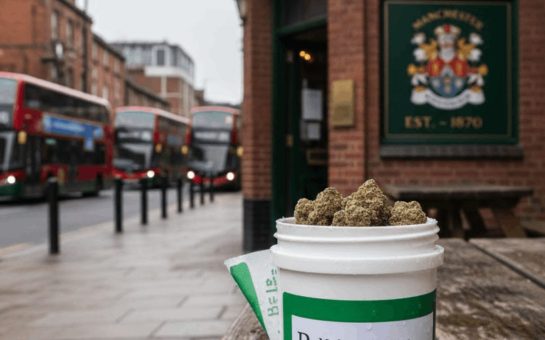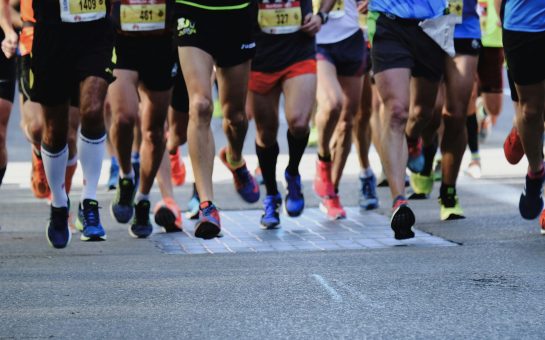“It’s a discomfort, it’s a huge unease. It’s like walking around with your sock slipped down in your shoe for the whole day, but ten times worse.”
Anxiety and mental health conditions are often tricky to explain but that’s how Laura Whitehurst – a Manchester model, blogger, and Anxiety UK training and partnerships co-ordinator – describes it.
The condition stems from our natural response system back in the wild, when our bodies reacted automatically against dangers, known as ‘fight or flight’.
That instinct remains, but is often misplaced and activates during daily scenarios as our brain perceives danger.
Symptoms include increased heart rate, feelings of sickness, tension, shaking or choking sensations as well hot flushes, sweats and breathing difficulties.
People may experience psychological effects, from loss of control, feeling on edge, wanting to escape or feeling that you might die, suffer a heart attack or brain tumour.
HIGH FIVE WORLD! Remember you’re all so strong. Keep fighting! Laura @ Anxiety UK #highfiveforanxiety #charitytuesday pic.twitter.com/vt67jGoz2r
— Anxiety UK (@AnxietyUK) September 22, 2015
Laura told MM: “You know that feeling when you’re walking down the stairs and you miss a step? Anxiety feels like that, but it lasts a whole lot longer.
“It will feel very different for a lot of different people, but ultimately it’s like a monster that follows you around, and tells you things that aren’t true.
“It tells you that bad things are going to happen all the time, and clings to you from the moment you get out of bed to the moment you get back in it.”
A range of factors from stress, physical problems, chemical imbalances to inherited genes can trigger symptoms.
Until relatively recently, mental health problems were considered a taboo or something that did not exist, sometimes with a stigma or prejudice attached.
Laura explained that within five years, society has gone from brushing it under the carpet and banishing it from conversation, to a more welcoming and open approach.
Some conversations are scary, but talking about your mental health needn’t be. Let’s keep talking. pic.twitter.com/gScm8IFfP6
— Anxiety UK (@AnxietyUK) February 9, 2016
“The stigma only really exists because of ignorance, as people will only ever feel stigmatised by those who don’t understand the condition and it’s important to talk about mental health, because the more we talk, the more we can educate,” she said.
One of the biggest perpetrators in creating a stigma according to Anxiety UK, is using the word ‘suffering,’ so they are working at creating alternatives for people to use when discussing their condition and the public’s perception.
Laura said: “We work really hard as a charity to take that out of common speech, as yes, we do have a mental health condition, but we’re not ‘suffering’.
“We’re living with it, we’re managing it every day and it can be really, really hard but we’re working at it.”
People with anxiety may feel a sense of loneliness, feeling trapped with no-one else to understand what they are feeling.
“For me, I thought I was the only person in the world going through what I was going through, and this only worsened by feelings of anxiety,” said Laura.
In fact anxiety related disorders are very common with an estimated one in six adults having experienced symptoms of it in any given week and one in 10 having experienced serious, disabling symptoms during their lives, according to a UK survey.
Studies by the World Health Organisation found that depression was 50% more disabling to a person when compared to angina, asthma and diabetes.
Currently 40% of worldwide disabilities are caused by depression and anxiety, with a recent Psychiatric Morbidity Survey indicating that 15% of England’s population have a mental health condition.
They estimate that 6million people have a mental health disorder – 3million with depression and 3 million with anxiety.
If left untreated with limited support for a person, problems can escalate and potentially increase the risk of suicide.
“Yay to you all, here’s your high five!” Says Jo, to all of our followers. #highfiveforanxiety #charitytuesday pic.twitter.com/mBPXYnsnHt
— Anxiety UK (@AnxietyUK) September 22, 2015
In Autumn 2014, Laura attempted suicide and a year later wrote a blog piece, celebrating her first birthday after that day.
She said: “In the weeks leading up to the first anniversary of my suicide attempt, I thought I’d be feeling quite apprehensive and down – any anniversary of a tough time in your life is bound to bring back similar feelings of pain.
“However for me, I wasn’t feeling low about it, I actually could take a look back on the year behind me and see how great it had been.
“And to see that if I had actually succeeded, how I wouldn’t have ever had these opportunities and experiences.
“I was truly thankful for the life I had lived, in the year that I had chosen to live it.”
The blog piece was extremely well received and attracted much attention and praise for its raw honesty about such a personal subject.
Laura added: “I wanted to share how OK it is not to feel OK.
“Hopefully I helped in taking down that curtain and showing people what to expect if they were to take themselves to A&E, and I encourage them to do it.”
Laura wanted to explain what she had been through, the people who had helped her, as well as using the blog as a release for her story which she’d kept hidden away.
“In a way, I wrote it for me. As an outpouring of a day that I had kept secret all year,” she said.
@lifeonlauralane he did. 5 years so far. Some days it’s like this… Other days it’s even better X pic.twitter.com/RNE4FNJ4og
— ShiaButterfly (@ShiaButterfly) December 1, 2015
Laura was overwhelmed by the responses to her blog, something she did not anticipate.
“I ended up receiving the most amazing, inspiring and beautiful messages from people I knew, and complete strangers,” she said.
“Some opened up to me about their own experiences, realising that it isn’t an anniversary to be mournful on – that you should be celebrating the life you’re living now, and the decision to stay here and live it to the full.
“I even received birthday cards through the post!”
The blogger attracted a hugely warm response from the piece with people opening up to her, despite it being a tough decision to share her story.
She said: “It was unexpected, but I’m glad it resonated with people, and as I said if it is going to encourage one person to reach out for support at a desperate time, then I know it’s been written for a purpose.
“It felt like I was suddenly showing every part of myself – every negative thought and every regret and mistake I had made – to the whole world.
“And it showed them that I’m pretty bruised and battered and it was really hard to decide whether or not to post it in the end, but I’m glad I did.”
During her time with the charity, Laura was responsible for setting up the #highfiveforanxiety campaign, which trended on Twitter, with celebrities including fashion and beauty blogger Zoella showing their support.
@AnxietyUK #highfiveforanxiety pic.twitter.com/JIDy3Mmdnb
— Zoë (@Zoella) September 22, 2015
The idea was to take a selfie with your hand in a high five and tweet it in honour of the charity and those living with anxiety related conditions.
Laura said: “The #highfiveforanxiety campaign was actually a little bit of an accident?! To be honest I did not expect it to go viral!
“I just wanted to show support to people out there in the world, right at that moment, to say ‘Hey, don’t worry about it, you’re doing great. Hang in there. Have a high five, champ.’
“And I wanted to know if anybody would high five me back.”
The campaign was a huge success, taking the internet by storm and reaching national news.
“I did have to text my boss, who was in a meeting at the time, to apologise for what she was about to come back to the office too… as her office phone is connected to Twitter and she was about to have a million notifications,” Laura added.
She went on to describe anxiety related issues as ‘an elephant in the room’ which should be tackled as early as possible.
“Because when it’s small, it’s easy to ask other people into the room and ask them to help you with it,” she said.
“As soon as it gets larger, you start to struggle getting past it to reach the door, less people can fit in the room to help you and you can start to become crushed under its weight.”
Anxiety UK encourages people to reach out about any mental health condition.
For help and advice click here.
Main image courtesy of Psych2Go, via YouTube, with thanks.



